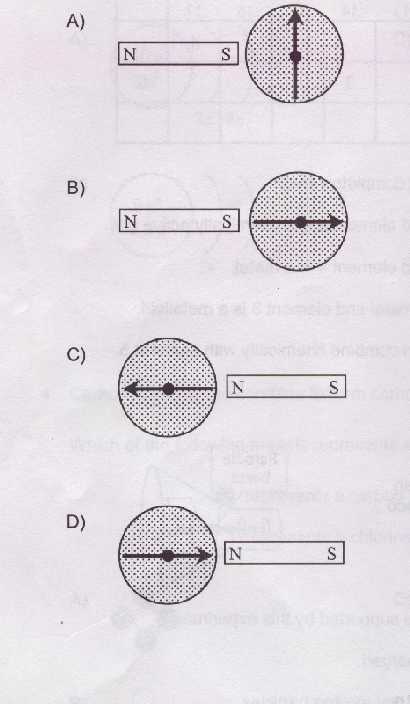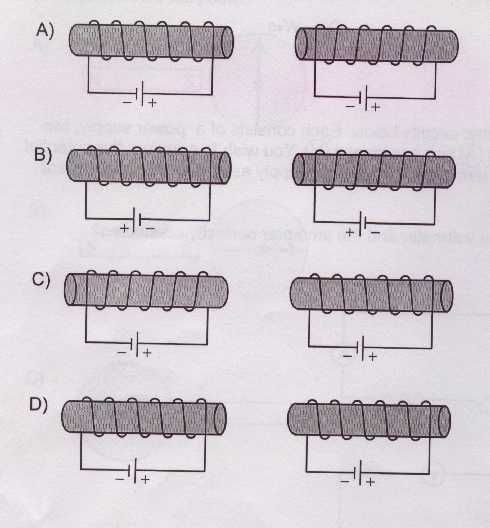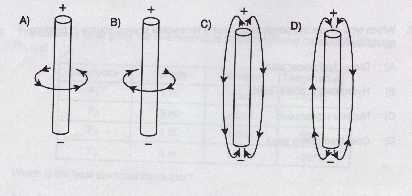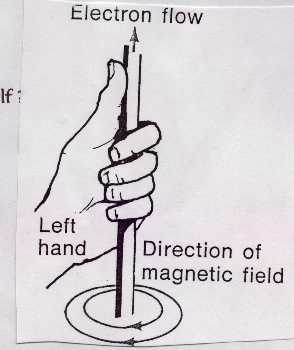
Sample Questions: (As usual, I left out questions that were too similar to ones that were already included)
1. (JUNE 2000: 416): A magnetic compass is placed at one of the ends of a bar magnet. Which of the following diagrams correctly shows the direction in which the compass needle will point?

2. (JUNE 2000: 416): Two electromagnets are placed end to end. In which of the following diagrams do the electromagnets attract each other?

3. (JUNE 1999: 416): Which of the following devices works by using magnetic fields?
A. light bulb
B. baseboard heater
C. loudspeaker
D. alkaline battery

5. (JUNE 1998: 416): An electric current flows through a straight wire and produces a magnetic field. Which of the following diagrams correctly represents this magnetic field?

Notes:
Magnetic Poles
|
Pole |
Pole |
Result |
|
North (N) |
North(N) |
repulsion |
|
South (S) |
South (S) |
repulsion |
|
North(N) |
South (S) |
attraction |
Magnetic Fields
These consist of lines of force that run from the north pole to the south pole. ( see question 4C .) They never cross, and the more lines you have the stronger the magnet.
When there are two fields side by side, the lines run from North to south again, but no loop is made through "empty space."
Types of Materials
The Relationship between Electricity and Magnetism
Electricity can be generated by moving magnets (like Hydro's generators), and with the correct setup, you can get motion from having electricity move in a loop between two magnets. That's because magnetism results from the motion of electrons. The poles always exist at an angle of 90o to the direction of the electrons.
(1)If electricity moves through a straight wire, the left-hand rule reveals the direction of a magnetic field. (revealed by sprinkling iron dust on a cardboard placed around wire. The direction is obtained from a compass needle: where the needle points is where the field is going.)

(2) A solenoid is a loop of wire, and the individual magnetic fields strengthen each other. The North pole of the overall field is revealed by the left hand rule again, but this time the thumb does not point in the direction of the (+) but in points North. The other fingers wrap themselves in the same way that the electrons do, and remember they flow from (-) to (+).

In the above diagram we have more than just a solenoid. A bar has been placed inside the coil, so we really have an electromagnet. To make this magnet stronger, we can
(a) increase the current
(b) place a ferromagnetic material inside the solenoid
(c) increase the number of loops